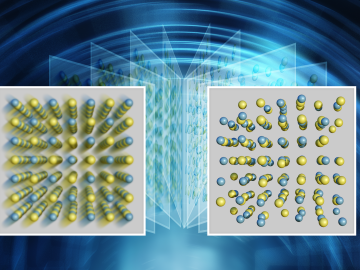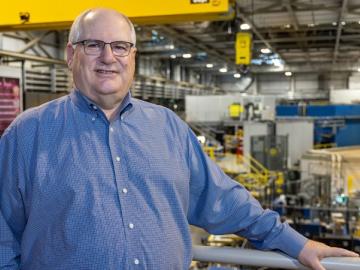
Filter News
Area of Research
- (-) Neutron Science (58)
- (-) Nuclear Science and Technology (4)
- (-) Supercomputing (63)
- Advanced Manufacturing (2)
- Biological Systems (1)
- Biology and Environment (31)
- Computational Biology (1)
- Computer Science (2)
- Energy Science (15)
- Fusion and Fission (4)
- Isotopes (18)
- Materials (28)
- Materials for Computing (5)
- National Security (13)
- Quantum information Science (1)
News Topics
- (-) Big Data (16)
- (-) Biomedical (13)
- (-) Computer Science (48)
- (-) Isotopes (3)
- (-) Neutron Science (56)
- (-) Physics (6)
- (-) Quantum Computing (11)
- (-) Space Exploration (3)
- 3-D Printing/Advanced Manufacturing (6)
- Advanced Reactors (4)
- Artificial Intelligence (23)
- Bioenergy (6)
- Biology (8)
- Biotechnology (1)
- Buildings (2)
- Chemical Sciences (2)
- Clean Water (2)
- Coronavirus (9)
- Cybersecurity (2)
- Energy Storage (3)
- Environment (18)
- Exascale Computing (16)
- Fossil Energy (1)
- Frontier (17)
- Fusion (6)
- Grid (1)
- High-Performance Computing (25)
- Hydropower (1)
- Machine Learning (10)
- Materials (9)
- Materials Science (15)
- Mathematics (2)
- Microscopy (2)
- Molten Salt (1)
- Nanotechnology (6)
- National Security (3)
- Nuclear Energy (19)
- Polymers (1)
- Quantum Science (11)
- Security (3)
- Simulation (12)
- Software (1)
- Summit (22)
- Transportation (4)
Media Contacts

Scientists have long sought to better understand the “local structure” of materials, meaning the arrangement and activities of the neighboring particles around each atom. In crystals, which are used in electronics and many other applications, most of the atoms form highly ordered lattice patterns that repeat. But not all atoms conform to the pattern.

A scientific instrument at ORNL could help create a noninvasive cancer treatment derived from a common tropical plant.

Environmental scientists at ORNL have recently expanded collaborations with minority-serving institutions and historically Black colleges and universities across the nation to broaden the experiences and skills of student scientists while bringing fresh insights to the national lab’s missions.

Natural gas furnaces not only heat your home, they also produce a lot of pollution. Even modern high-efficiency condensing furnaces produce significant amounts of corrosive acidic condensation and unhealthy levels of nitrogen oxides

The truth is neutron scattering is not important, according to Steve Nagler. The knowledge gained from using it is what’s important

ORNL’s next major computing achievement could open a new universe of scientific possibilities accelerated by the primal forces at the heart of matter and energy.

Five National Quantum Information Science Research Centers are leveraging the behavior of nature at the smallest scales to develop technologies for science’s most complex problems.

Travis Humble has been named director of the Quantum Science Center headquartered at ORNL. The QSC is a multi-institutional partnership that spans industry, academia and government institutions and is tasked with uncovering the full potential of quantum materials, sensors and algorithms.

ORNL researchers used the nation’s fastest supercomputer to map the molecular vibrations of an important but little-studied uranium compound produced during the nuclear fuel cycle for results that could lead to a cleaner, safer world.

A team of researchers has developed a novel, machine learning–based technique to explore and identify relationships among medical concepts using electronic health record data across multiple healthcare providers.


